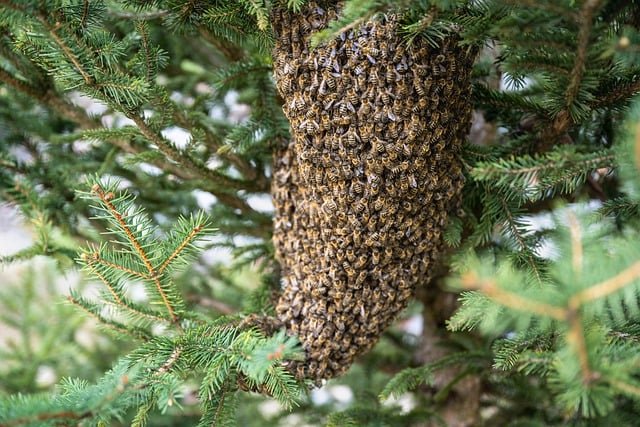
Greeting to all steemians...
The Miracle of the Forest Beehive.
Forest beehives are one of the natural wonders that illustrate the harmony between insect life and the surrounding environment. This nest is built by wild honey bees, which belong to the genus Apis, in forests that are rarely touched by humans. In general, this type of bee lives in large colonies consisting of thousands to tens of thousands of individuals.
Forest Beehive Structure.
Forest bee hives consist of various components carefully designed by bees to meet the needs of their colony. In the middle of the hive there is the main housing area, namely the hive panel consisting of honey cells built from wax. These cells not only function as a place to store honey, but also as a place to lay eggs for the queen bee.
Functions and Benefits of Forest Bee Hives.
Forest bee hives have an important role in the forest ecosystem. One of its main benefits is as a natural pollinator. When bees collect nectar from flowers around the forest to turn it into honey, they indirectly help in plant pollination, which supports the sustainability of various plant species.
Apart from that, forest bee hives are also a source of inspiration and admiration for humans. The quality and strength of the wax produced by bees has been used since ancient times for various purposes, from candles for lighting to materials for carvings.
Threats to Forest Bee Hives.
Despite their importance, forest bee hives face serious threats from a variety of factors. Climate change, deforestation, pesticide use, and habitat disturbance are some of the main problems threatening bee populations and their hives. Loss of the natural habitat of wild honey bees results in a reduction in their population, which in turn can have a detrimental impact on the ecosystem as a whole.
Conservation and Protection.
To protect forest bee hives and ensure the survival of wild honey bees, serious conservation measures are needed. Steps such as preserving natural habitats, reducing the use of pesticides that harm bees, and educating the public about the importance of bee conservation can help maintain the existence of forest bee hives in the wild.
Conclusion
Forest bee hives are not only amazing physical structures, but are also important in maintaining the balance of the forest ecosystem. By protecting and respecting wild honey bees and their hives, we not only ensure the survival of these insects, but also support the sustainability of our environment as a whole.
Thank you for stopping.
Downvoting a post can decrease pending rewards and make it less visible. Common reasons:
Submit
Upvoted. Thank You for sending some of your rewards to @null. It will make Steem stronger.
Downvoting a post can decrease pending rewards and make it less visible. Common reasons:
Submit